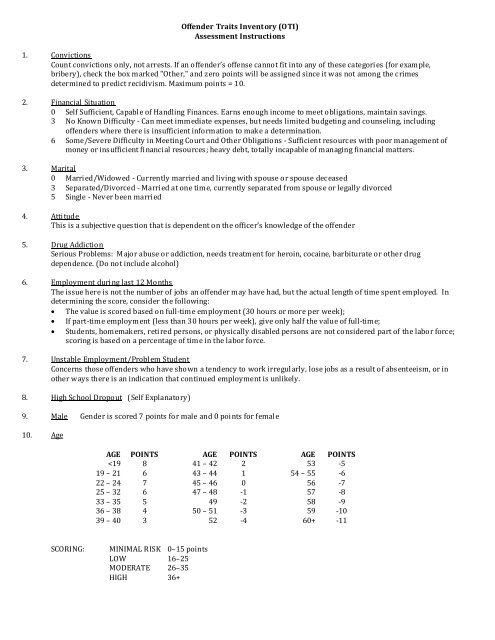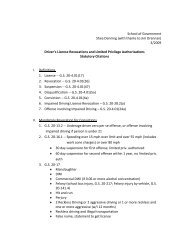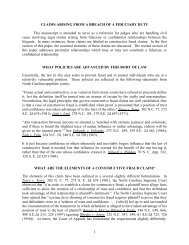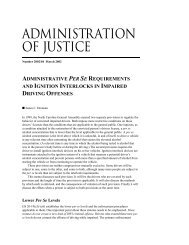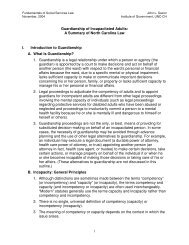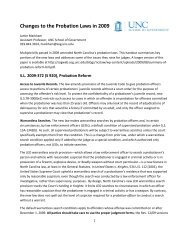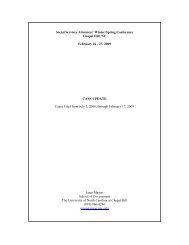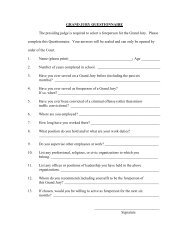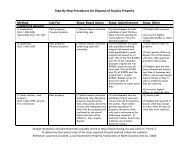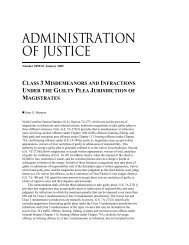OFFENDER TRAITS INVENTORY (Risk Assessment - OPUS Screen ...
OFFENDER TRAITS INVENTORY (Risk Assessment - OPUS Screen ...
OFFENDER TRAITS INVENTORY (Risk Assessment - OPUS Screen ...
Create successful ePaper yourself
Turn your PDF publications into a flip-book with our unique Google optimized e-Paper software.
Offender Traits Inventory (OTI)<br />
<strong>Assessment</strong> Instructions<br />
1. Convictions<br />
Count convictions only, not arrests. If an offender’s offense cannot fit into any of these categories (for example,<br />
bribery), check the box marked "Other," and zero points will be assigned since it was not among the c rimes<br />
determined to predict recidivism. Maximum points = 10.<br />
2. Financial Situation<br />
0 Self Sufficient, Capabl e of Handling Finances. Earns enough income to meet obligations, maintain savings.<br />
3 No Known Difficulty - Can meet immediate expenses, but needs limited budgeting and counseling, including<br />
offenders where there is insufficient information to make a determination.<br />
6 Some/Severe Difficulty in Meeting Court and Other Obligations - Sufficient resourc es with poor management of<br />
money or ins ufficient fi nanci al resources ; heavy debt, totally incapable of managing financial matters.<br />
3. Marital<br />
0 Marri ed/Widowed - Currently married and living with spouse or spouse dec eased<br />
3 Separated/Divorced - Marri ed at one time, currently separated from spous e or legally divorced<br />
5 Single - Nev er been marri ed<br />
4. Atti tude<br />
This is a subjective ques tion that is dependent on the officer’s knowledge of the offender<br />
5. Drug Addiction<br />
Serious Problems: M ajor abuse or addiction, needs treatment for heroin, cocaine, barbiturate or other drug<br />
dependence. (Do not include alcohol)<br />
6. Employment duri ng last 12 Months<br />
The issue here is not the number of jobs an offender may have had, but the actual length of time spent employed. In<br />
determining the score, consider the following:<br />
• The value is scored based on full-time employment (30 hours or more per week);<br />
• If part-time employment (less than 30 hours per week), give only half the value of full-time;<br />
• Students, homemakers, retired persons, or physically disabled persons are not considered part of the labor forc e;<br />
scoring is based on a percentage of time in the labor force.<br />
7. Unstable Employment/Probl em Student<br />
Concerns those offenders who have shown a tendency to work irregularly, lose jobs as a result of abs enteeism, or in<br />
other ways there is an indication that continued employment is unlikely.<br />
8. High School Dropout (Self Explanatory)<br />
9. Male Gender is scored 7 points for male and 0 poi nts for femal e<br />
10. Age<br />
AGE POINTS AGE POINTS AGE POINTS<br />


